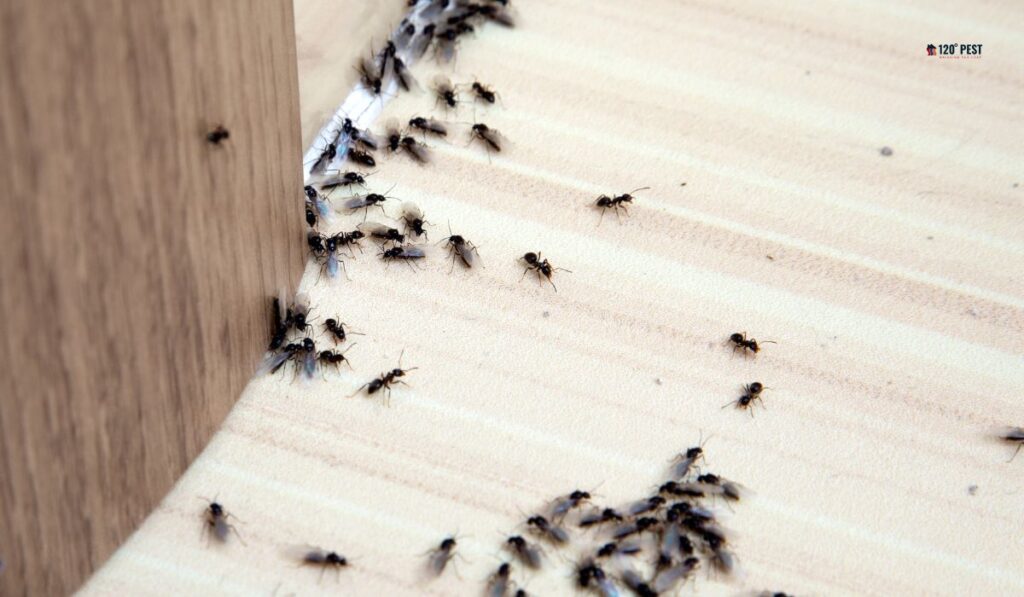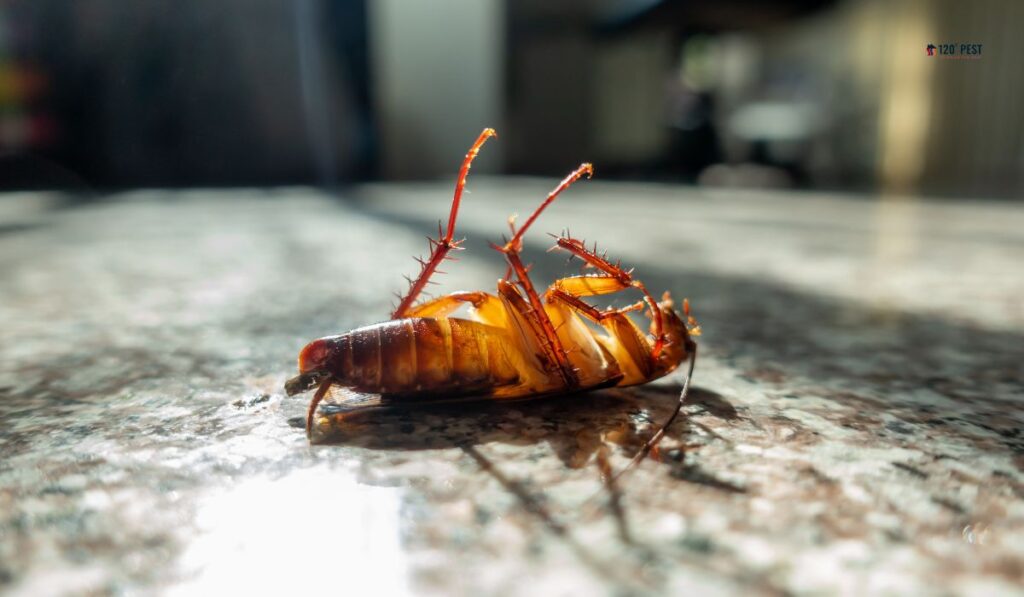Pest control is not just a matter of convenience; it is a crucial aspect of maintaining a healthy and safe living environment.
Your home is your sanctuary, and when pests invade, they can compromise both its structural integrity and the well-being of its occupants.
In this article, we will explore ten telltale signs that indicate your house may be in need of professional pest control services.
Unexplained Damage
Signs of structural damage caused by pests
Pests, such as termites and rodents, can cause significant harm to the structural components of your home.
Look for warped wood, gnawed wires, and damaged insulation as potential indicators of a pest infestation.
Identifying chew marks, gnawed wires, and damaged insulation
Inspect areas prone to pest activity for distinctive signs of damage.
Chew marks on furniture, wires, or insulation are clear signals that pests may have taken up residence.
The correlation between unexplained damage and potential pest infestation
Understanding the connection between unexplained damage and pests is essential for early detection.
Prompt action can mitigate further destruction and prevent extensive repair costs.
Strange Noises
Unusual sounds that may indicate the presence of pests
Pests can be noisy neighbors.
Listen for sounds like scratching, scurrying, or rustling, especially in the walls or ceiling, as they might indicate the presence of unwelcome guests.
Differentiating between normal household sounds and pest-related noises
It’s crucial to distinguish between typical household sounds and those that may signal a pest infestation.
Familiarize yourself with the unique noises various pests make to identify them accurately.
Common pests known for creating distinct sounds
Certain pests, like rodents or insects, produce specific sounds.
Knowing the pests’ auditory signatures can help you pinpoint the type of infestation you might be dealing with.
Fecal Droppings
Recognizing pest droppings and their characteristics
Examine your home for pest droppings, which can vary widely in size, shape, and color depending on the pest.
Identifying these droppings is crucial for effective pest control.
The importance of identifying the type of pest based on droppings
Different pests leave distinct droppings, providing valuable clues about the infestation.

Proper identification allows for targeted pest control measures.
Health risks associated with pest droppings in the home
Beyond being unsightly, pest droppings can pose serious health risks, causing allergies and respiratory issues.
Swift action is necessary to safeguard the well-being of your household.
Unpleasant Odors
Detecting foul smells linked to pest infestations
Unpleasant odors, often a result of pest infestations, can permeate your home.
Pay attention to any foul or unusual smells, especially in confined spaces.
Types of pests that are notorious for producing unpleasant odors
Certain pests emit distinct odors, such as the musty smell of bed bugs or the pungent scent of rodents.
Recognizing these smells aids in early detection.
The potential health hazards of living with pest-related odors
Living in an environment with pest-related odors can have health implications.
Respiratory issues and allergies may arise, emphasizing the need for immediate pest control measures.
Nesting Sites
Identifying areas where pests may build nests
Pests seek out secluded areas to build nests and breed.
Check attics, basements, and crawl spaces for signs of nesting activity.
The correlation between nesting sites and the severity of infestations
The presence of nesting sites often indicates a thriving pest population.
Understanding this correlation helps assess the severity of the infestation.
Preventive measures to discourage pests from creating nests
Take proactive steps to discourage pests from establishing nests in and around your home.
Regular maintenance and sealing entry points can be effective preventive measures.
Increased Pest Sightings
Monitoring the frequency of pest sightings in and around your home
An uptick in pest sightings is a clear indication of a growing infestation.
Keep track of the frequency of encounters to gauge the severity of the problem.
Understanding the significance of a sudden increase in pest activity
A sudden surge in pest activity may signify a seasonal influx or a conducive environment for breeding.
Understanding the cause is crucial for effective pest control.
Common pests that are more active during specific seasons
Different pests are more active during specific seasons.
Knowing their seasonal patterns enables you to anticipate and address potential infestations proactively.
Pest Trails
Recognizing trails left behind by pests
Pests often leave trails in the form of droppings, urine, or marks.
Identifying these trails helps map their movement patterns and locate potential nesting sites.
Tracing pest movement patterns and entry points
Understanding how pests move through your home assists in targeted pest control.
Identify entry points and seal them to prevent further infestations.
How identifying pest trails can aid in targeted pest control
Pest trails provide valuable information for effective pest control strategies.
Follow these trails to locate nests and implement measures to eliminate the infestation.
Pet Behavior Changes
Observing alterations in your pet’s behavior due to pest presence
Pets can be sensitive to the presence of pests.
Observe changes in their behavior, such as increased scratching or agitation, which may indicate a pest problem.
The potential health implications for pets living with pests
Pests can pose health risks to pets, including bites, allergies, or infections.
Prompt pest control is essential to safeguard the well-being of your furry companions.
Taking proactive steps to protect pets from pest-related harm
Implement preventive measures to protect your pets from pests, including regular grooming, flea treatments, and maintaining a pest-free home environment.
Visible Pest Eggs
Identifying pest eggs and understanding their significance
Some pests lay eggs that are visible to the naked eye.
Recognizing these eggs is crucial for early detection and effective pest control.
Recognizing different types of pest eggs
Different pests lay different types of eggs.
Knowing the characteristics of pest eggs aids in identifying the type of infestation and implementing appropriate control measures.
Steps to eliminate pests and their eggs effectively
Addressing both pests and their eggs is essential for comprehensive pest control.
Consult with professionals to ensure thorough eradication and prevent future infestations.
Drooping Plants
The impact of pests on indoor and outdoor plants
Pests aren’t limited to the interior of your home.
They can also affect your garden and indoor plants.
Watch for signs of distress, such as drooping leaves or abnormal growth.
Signs of plant distress caused by pest infestations

Pest-infested plants exhibit various signs, including yellowing leaves, chewed foliage, or stunted growth.
Timely intervention is vital to preserve the health of your plants.
Integrated pest management for protecting plant life
Implement integrated pest management strategies to protect your plants, combining natural remedies, beneficial insects, and selective pesticide use for a holistic approach.
Conclusion
In conclusion, recognizing signs like unexplained damage, strange noises, fecal droppings, unpleasant odors, nesting sites, increased pest sightings, pest trails, pet behavior changes, visible pest eggs, and drooping plants is crucial for prompt pest control.
Identifying these indicators helps prevent structural damage, health risks, and preserves the well-being of both your home and its occupants.
For effective solutions, contact professional pest control services at 120 Pest.
They can provide comprehensive services for eradication and prevention, ensuring a pest-free and healthy living environment.
FAQs
What are some signs of structural damage caused by pests?
Look for warped wood, gnawed wires, and damaged insulation as potential indicators of a pest infestation.
How can I identify chew marks, gnawed wires, and damaged insulation in my home?
Inspect areas prone to pest activity for distinctive signs of damage, such as chew marks on furniture, wires, or insulation.
Why is understanding the connection between unexplained damage and pests important?
Early detection is crucial, as prompt action can mitigate further destruction and prevent extensive repair costs.
What are some unusual sounds that may indicate the presence of pests in my home?
Listen for sounds like scratching, scurrying, or rustling, especially in the walls or ceiling, as they might indicate the presence of pests.
How can I differentiate between normal household sounds and pest-related noises?
Familiarize yourself with the unique noises various pests make to accurately identify them.
What types of pests are known for creating distinct sounds?
Certain pests, like rodents or insects, produce specific sounds. Knowing these auditory signatures helps pinpoint the type of infestation.
How can I recognize and identify pest droppings in my home?
Examine your home for pest droppings, which can vary widely in size, shape, and color depending on the pest.
Why is it important to identify the type of pest based on droppings?
Different pests leave distinct droppings, providing valuable clues about the infestation for targeted pest control measures.
What health risks are associated with pest droppings in the home?
Pest droppings can pose serious health risks, causing allergies and respiratory issues, emphasizing the need for swift action.
What types of pests are notorious for producing unpleasant odors?
Certain pests emit distinct odors, and recognizing these smells aids in early detection, preventing potential health hazards.
How can I identify areas where pests may build nests in my home?
Pests seek out secluded areas such as attics, basements, and crawl spaces for nesting. Regular maintenance and sealing entry points can discourage nesting.
Why is there a correlation between nesting sites and the severity of infestations?
The presence of nesting sites often indicates a thriving pest population, helping assess the severity of the infestation.
What are preventive measures to discourage pests from creating nests?
Proactive steps, like regular maintenance and sealing entry points, can discourage pests from establishing nests in and around your home.




